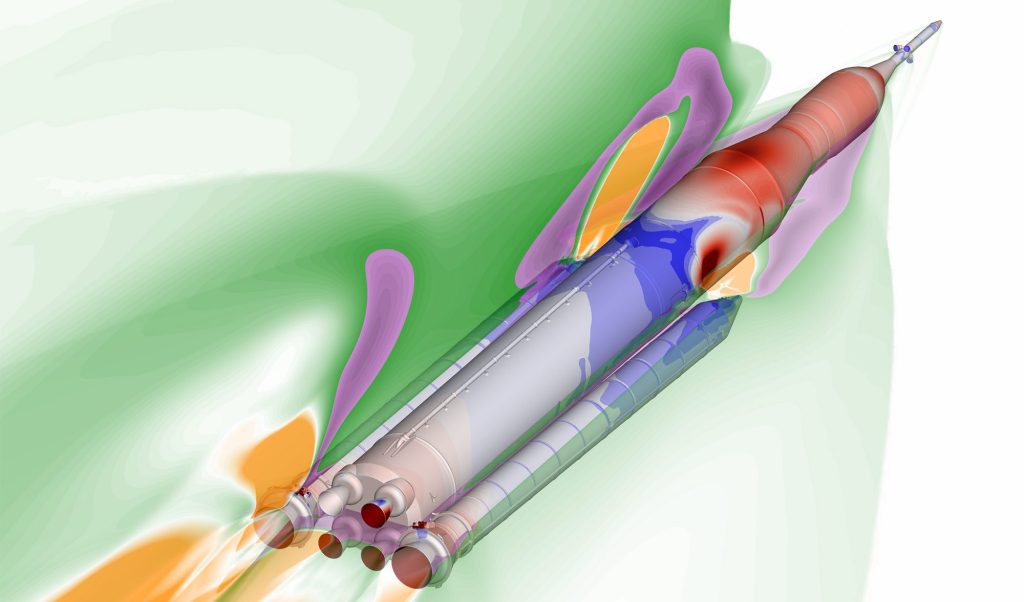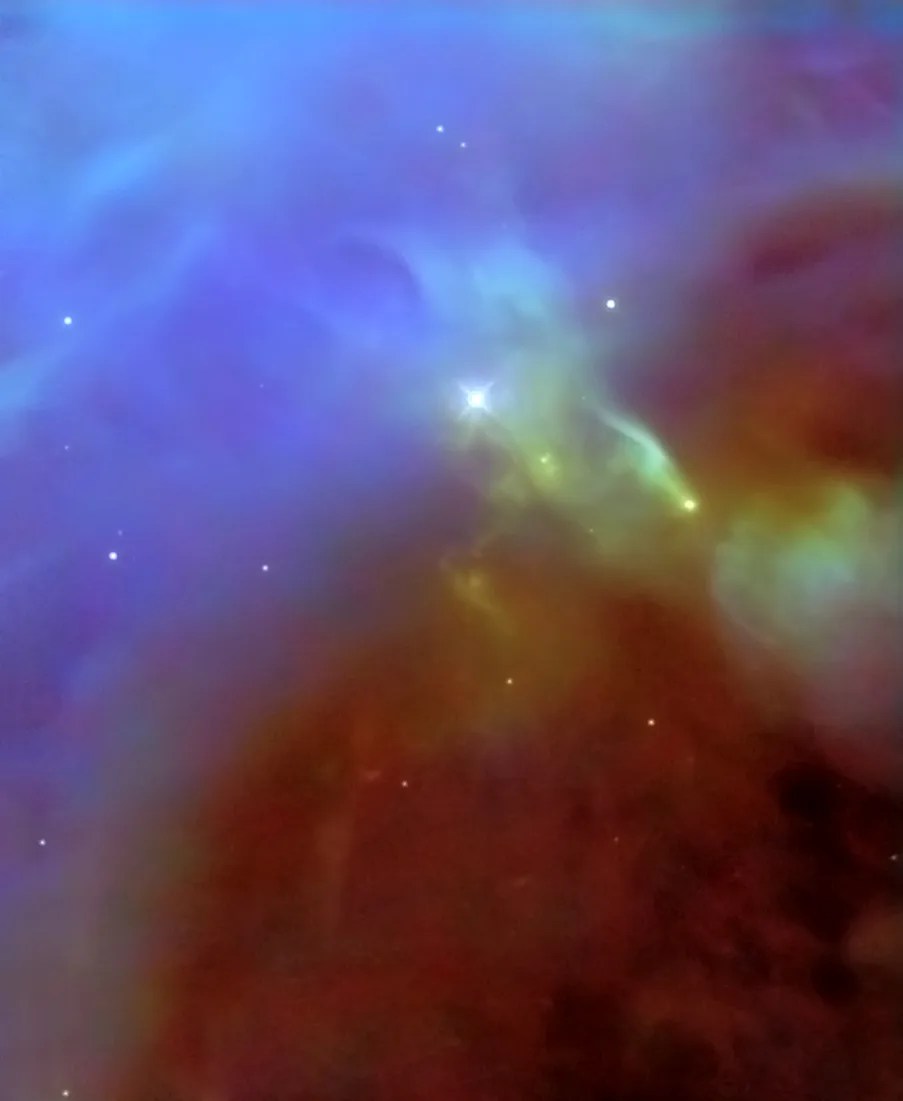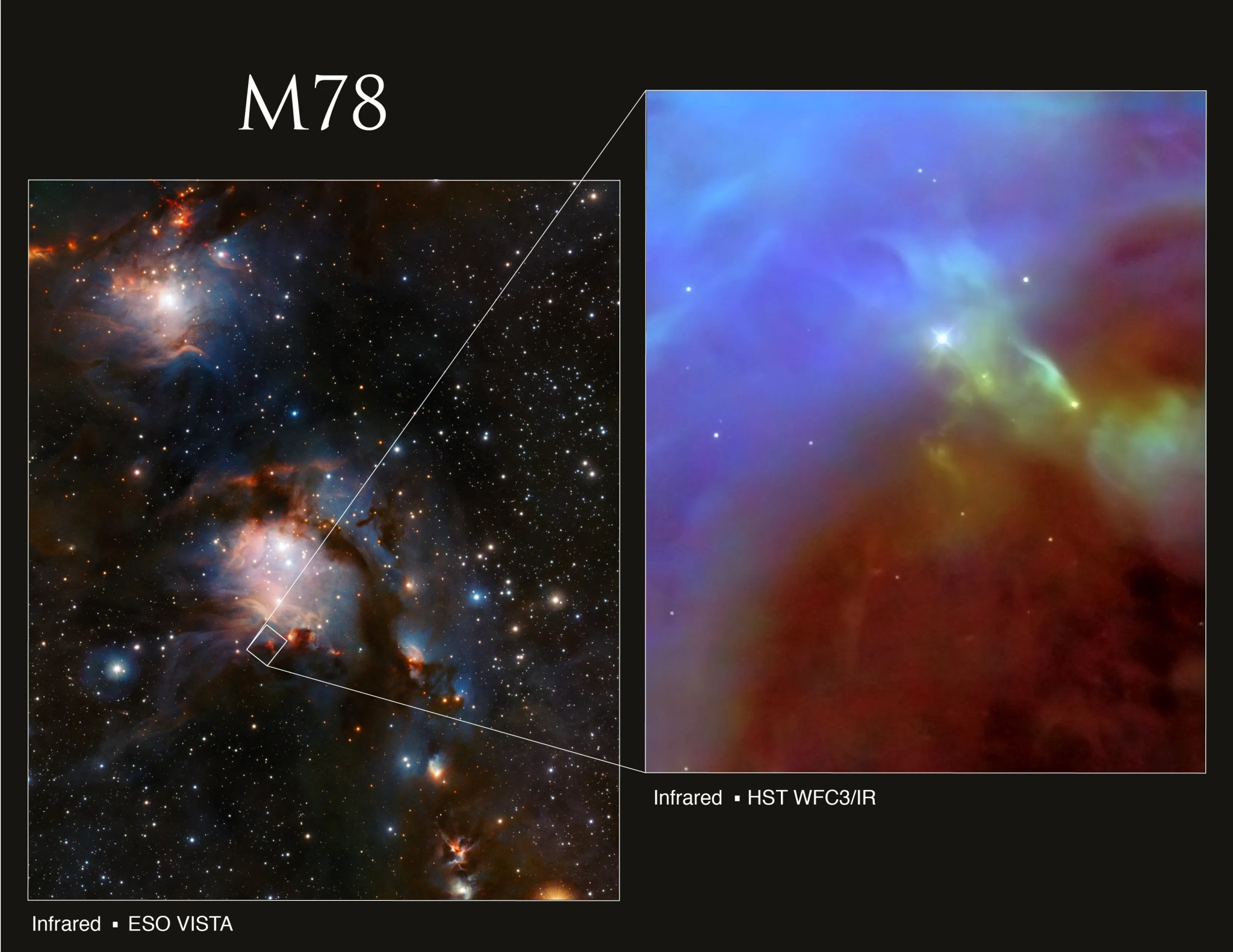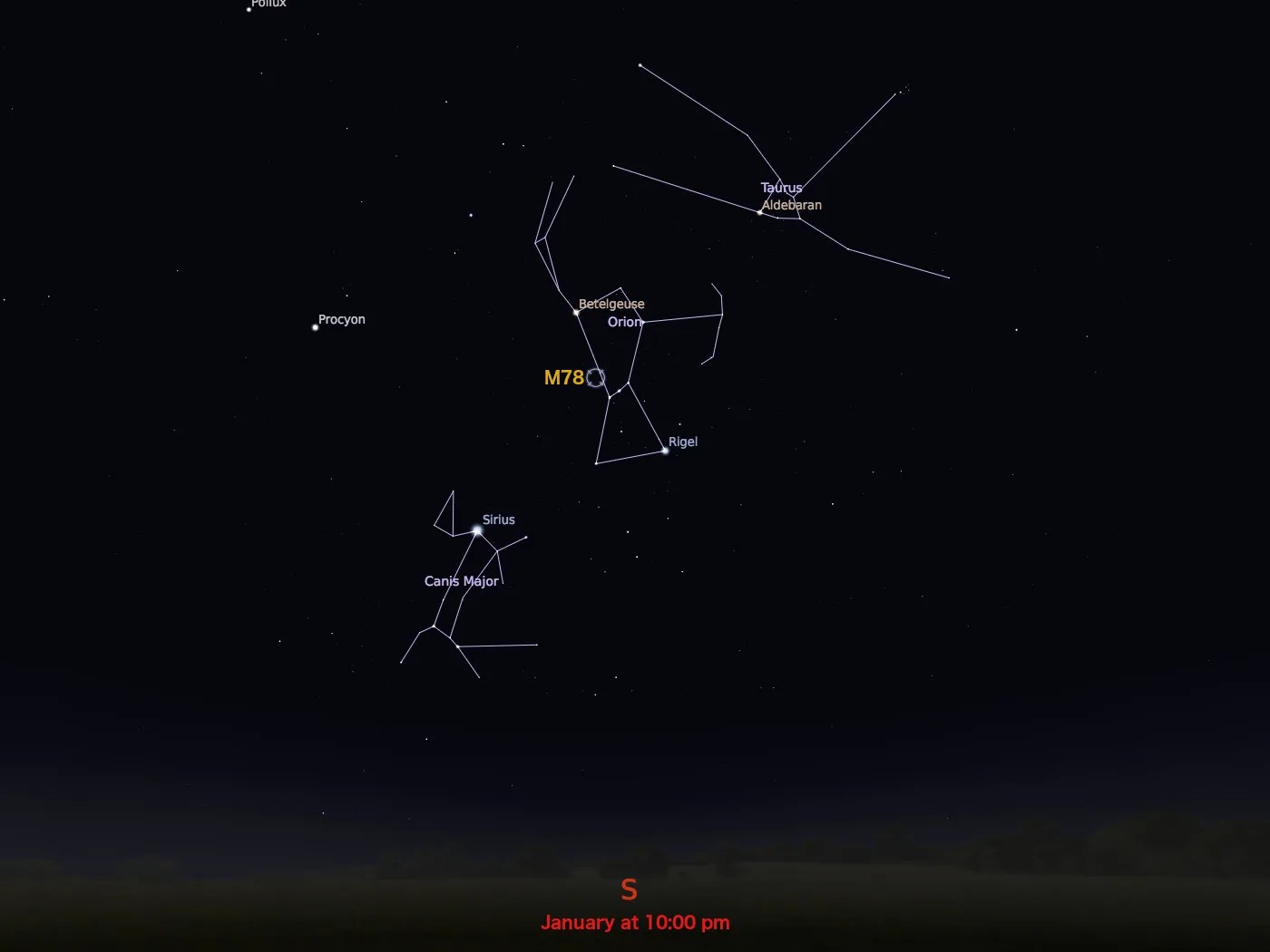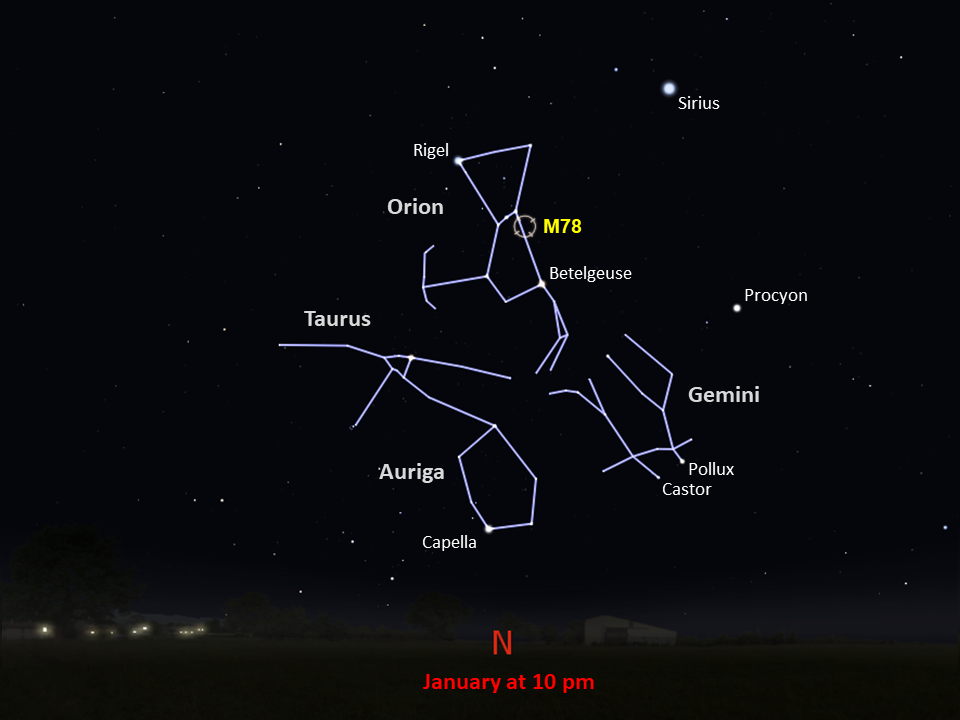Messier 78
Hubble's infrared image of Messier 78 helped astronomers understand how young stars develop.
Distance
1,600 light-years
Apparent Magnitude
8.0
constellation
Orion
object type
Reflection Nebula
This colorful image features a small part of M78, a reflection nebula located in the constellation Orion. A reflection nebula is created when light from a star is scattered or reflected off a nearby dust cloud. M78 is located approximately 1,600 light-years away from Earth and has an apparent magnitude of 8.
M78 was discovered in 1780 by Charles Messier’s colleague Pierre Méchain. It is best seen in January. M78 can be found in binoculars and small telescopes, but telescopes 8 inches or larger will reveal more detail in the nebula. M78 has the distinction of appearing very comet like, with one side of the nebula flaring away like a comet’s tail. This has fooled many comet hunters into believing they have made a new discovery.
This infrared view was made using Hubble’s Near Infrared Camera and Multi-Object Spectrometer (NICMOS) and Wide Field Camera 3. The Hubble observations were taken to develop a better understanding of protostellar evolution, the early developmental stages in a star’s life.
Explore Hubble's Messier Catalog
The following pages contain some of Hubble’s best images of Messier objects.

Overview The Messier catalog, begun by astronomer Charles Messier in the 18th Century and revised over the years, includes some…

Better known as the Crab Nebula, Charles Messier originally mistook Messier 1 for Halley’s Comet, which inspired him to create…
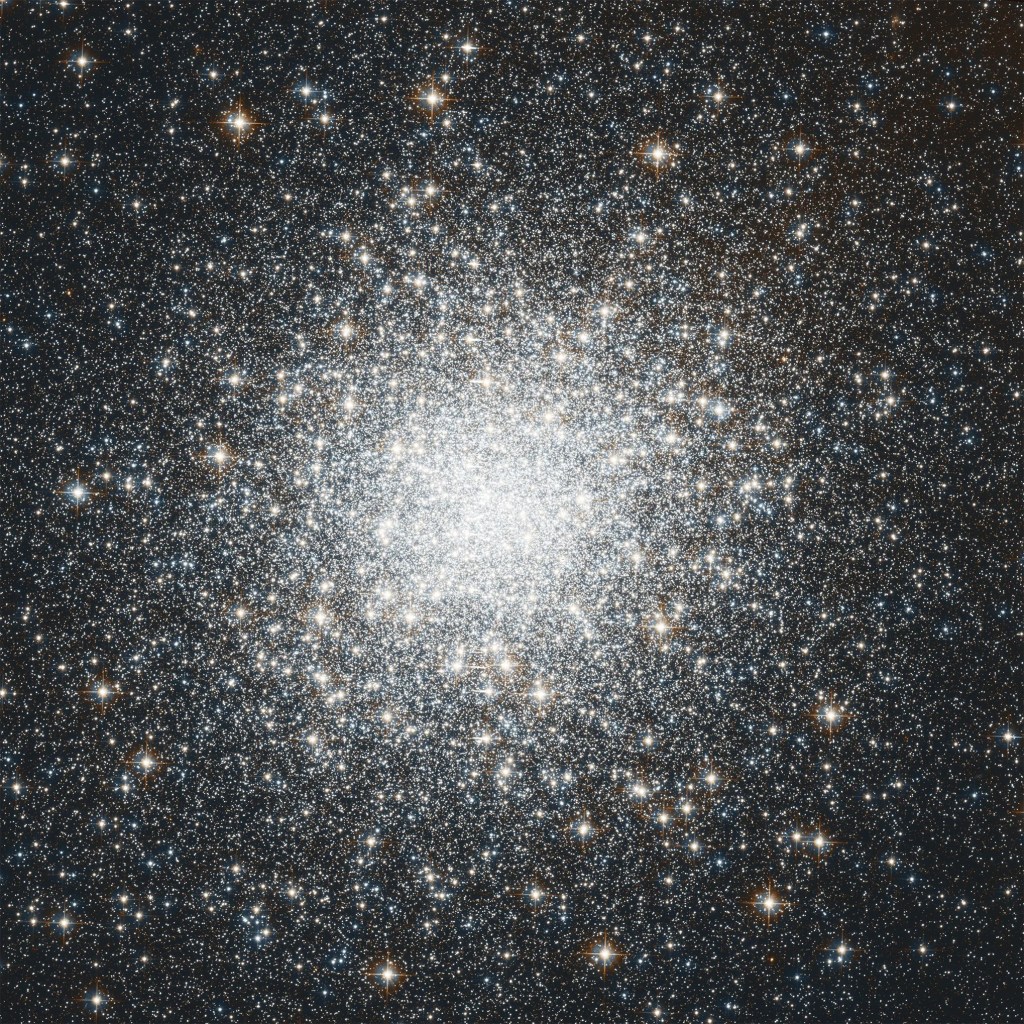
Hubble's image of Messier 2 is comprised of visible and infrared wavelengths of light.















